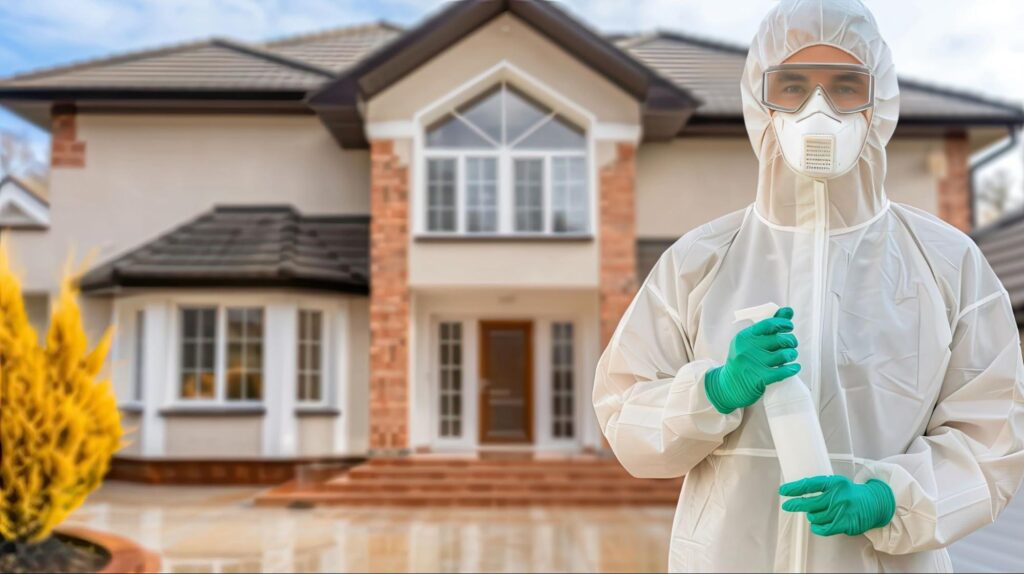Biohazard situations—like those involving bloodborne pathogens, chemicals, or other hazardous materials—require special care to ensure safety during cleanup and removal. Biohazard incidents may arise from accidents, unattended deaths, crime scenes, or even hoarding scenarios. Proper preparation is critical, as it facilitates cleanup and reduces health risks for everyone involved.
This guide provides essential steps to help you prepare your spaces for biohazard removal, ensuring a safe and efficient process.
Understanding Biohazards and Their Risks
Before preparing for biohazard removal, it’s important to understand what constitutes a biohazard and the associated risks. Biohazards refer to biological materials that can pose health risks to humans or animals. This category includes blood, bodily fluids, tissues, chemicals, and other potentially infectious materials (OPIM).
Situations requiring biohazard cleanup can include:
- Unattended Deaths: When someone passes away and isn’t discovered for an extended period, bacteria and bodily fluids can infiltrate surrounding materials.
- Crime Scenes: Bloodborne pathogens and other contaminants may be present at these scenes.
- Chemical Spills: If improperly handled, hazardous chemicals or substances can cause environmental and health risks.
- Hoarding Situations: Large amounts of waste or neglect can lead to biohazardous conditions.
Each situation has specific protocols and requires certified cleanup professionals to manage effectively. Preparing the home accordingly can help make the process smoother. Moreover, biohazard removal demands expertise, so hiring experts is essential. This specialized service ensures thorough decontamination while adhering to safety protocols and legal guidelines. Therefore, if you’re looking for the right service, you may start by conducting a quick web search using keywords like “Experienced Crime Scene Cleanup Team” to explore many options.
Steps for Preparing for Biohazard Removal
Preparing a home for biohazard removal ensures safety and efficiency during cleanup. Below are the steps to take from the get-go:
Secure the Area and Limit Access
Restricting access to the contaminated area is one of the first steps in preparing for biohazard removal. Limiting entry ensures no one accidentally exposes themselves to harmful materials. Place barriers or signs around the area to warn others and prevent unnecessary entry.
In cases of significant contamination, consider locking or sealing doors in the affected areas. This helps contain contaminants within a controlled space, reducing the risk of further spreading to other home parts.
Remove Personal Belongings and Valuables
Before biohazard professionals arrive, remove personal belongings, valuables, and irreplaceable items from the affected area, if it’s safe to do so. Some items may become contaminated and difficult to decontaminate, while others could interfere with the cleanup process. Be cautious and wear protective gloves when handling objects from the contaminated zone, as they may have been exposed to hazardous materials.
Protect Unaffected Areas
To prevent cross-contamination, use plastic sheeting or tarps to cover doorways, floors, and other surfaces leading to and surrounding the biohazard site. Sealing off unaffected rooms with plastic barriers can also keep contaminants from spreading and protect other parts of the house from exposure. This measure is particularly important if the cleanup process involves areas with high traffic or open ventilation systems.
Establish Clear Access for Cleanup Professionals
Ensure that cleanup professionals have easy access to the biohazard site. Remove any obstacles, furniture, or items that could hinder their movement. If cleanup requires large equipment or supplies, clear a path for workers to bring in everything necessary. This access should be direct and safe to minimize potential exposure to biohazardous materials.
In situations involving crime scenes, coordinating with law enforcement may also be necessary to maintain the integrity of any evidence and the area surrounding it.
Ventilate the Area (If Possible)
While securing the area is crucial, ventilation is also beneficial in certain cases, especially when dealing with strong odors or airborne pathogens. Opening windows or doors in contaminated areas can allow air circulation, which helps dispel some odors or airborne particles.
However, this should be done carefully and ideally after consulting with the biohazard team. They may advise against ventilation in cases where airborne contaminants could pose a risk to nearby areas or individuals.
Remove Pets and Children from the Area
Biohazard sites can pose significant risks to pets and children, who may inadvertently come into contact with dangerous materials. To ensure their safety, relocate them to another part of the home or, if possible, to a temporary location outside of the house until the area has been fully decontaminated. Animals and young children are particularly vulnerable, as they may not recognize the hazards present.
Prepare for Potential Odors and Airborne Particles
In cases where biological decomposition or chemical exposure has occurred, lingering odors and particles may be present even after initial cleanup. Consider investing in an air purifier with a HEPA filter for the area or discuss deodorizing options with the biohazard cleanup team. HEPA filtration systems can also help capture airborne particles, making the air safer to breathe post-cleanup.
Coordinate Disposal and Documentation Needs
Biohazardous waste disposal requires adherence to specific regulations to prevent contamination and protect public health. The cleanup experts will manage disposal but may need your input on certain items or documentation.
Also, keep records of what was removed or cleaned, as this may be useful for insurance claims or legal purposes. If you plan to file a claim, contact your insurance provider beforehand to ensure all necessary documentation is in place.
Final Thoughts
Biohazard cleanup requires meticulous planning and careful execution. By following these preparation steps, you can help ensure a safer and more efficient process, allowing professionals to focus on thorough decontamination. Remember, biohazard removal isn’t just about cleanliness—it’s a matter of health and safety for everyone involved.




More Stories
How to Bet from Your Phone, Even If You Have Weak Internet
Cyprus Residency vs. Citizenship: What’s the Difference?
5 Tips for Choosing a Barndominium Floor Plan for Your Dream Home